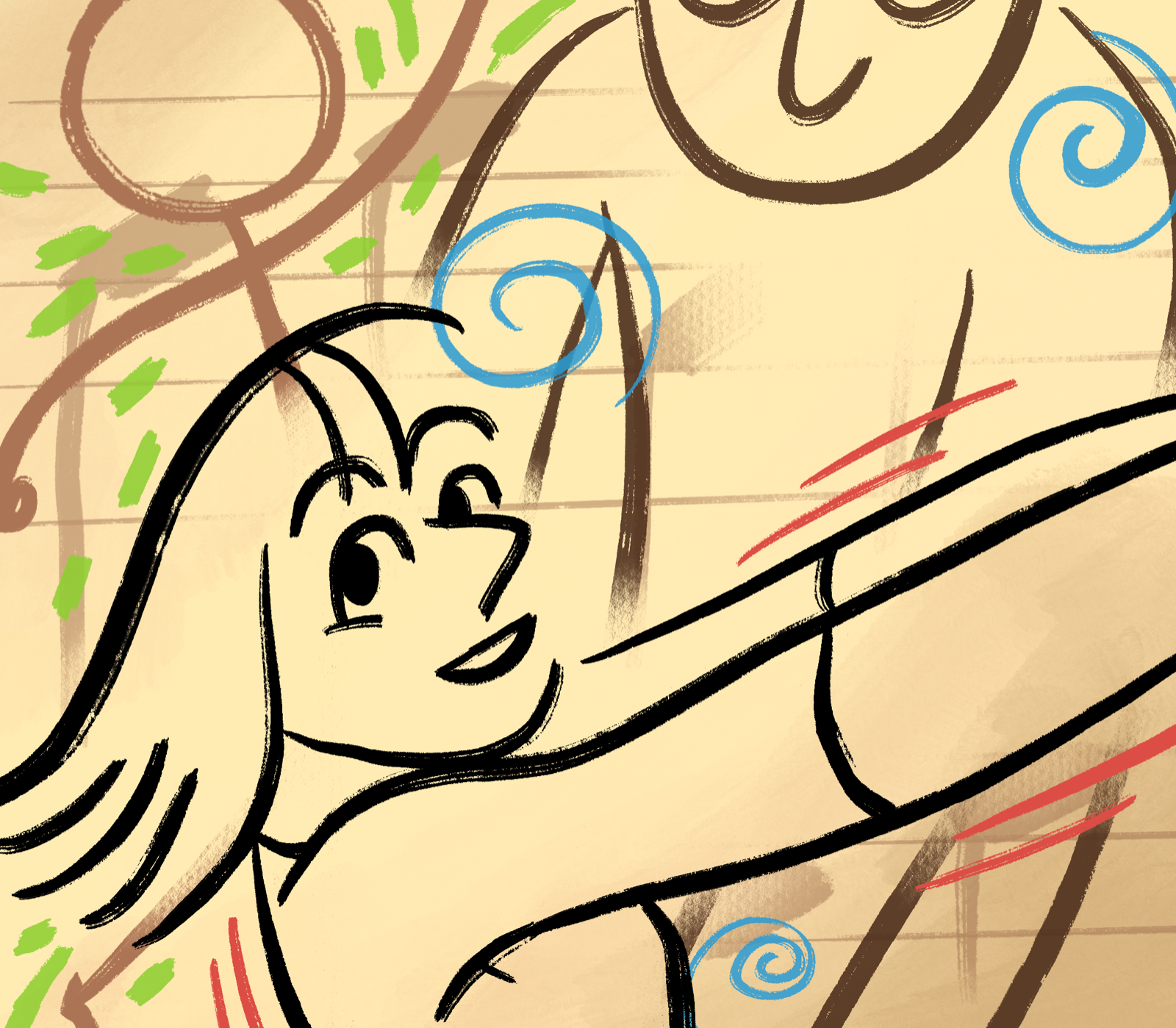Fine art prints seek to elevate, memorialize choreography from quarantine

(Dani Nalangan/Daily Bruin)
By Laura Carter
Oct. 8, 2021 9:52 a.m.
“The Choreographers’ Scores: 2020” turns dance into art that leaps off the page.
The Center for the Art of Performance at UCLA commissioned and published a collection of fine art pieces from 26 choreographers, each tasked with creating a dance score – to be turned into a fine art print by The Lapis Press – while in quarantine for the COVID-19 pandemic. CAP deputy director and program manager Fred Frumberg said the purpose of the collection was to provide a project for performing artists who were suddenly unable to work at the onset of the pandemic
“(The curator wanted) to give (choreographers) a chance to begin to actually conceptualize some of their new dance projects when they were not able to get into a rehearsal space,” Frumberg said. “It became an alternative for them to think through their next piece.”
One of the 26 choreographers, Ann Carlson, said the project proposal from curator Kristy Edmunds was timely because it allowed her to reflect on the impact of her past works. The visiting faculty member at World Arts and Cultures/Dance said when creating her score she began by toying with the role of footprints and how they are used to represent life in other art forms, like in Mary Stevenson’s poem “Footprints in the Sand.”
The drawing in the rest of the score, Carlson said, jumped out at her when she was cleaning out her personal archive of materials she had used for previously choreographed pieces. She said the score came from a choreographed work for an improvisational piece from the 1980s entitled “Friends” where the notations served as a representation of the space each dancer had to work in. Because the work also reminded her of the emotions surrounding her experience coming out, she said the project allowed her to take a piece that had such personal importance to her and add a tangible layer in the form of visual art to it she hadn’t considered before.
“Primarily, I work in a temporal form – a form that only exists in the moment,” Carlson said. “… It’s a delight to consider an object that represents that moment in time and then has all these other layers of meaning, too.”
[Related: Dance Disassembled: Student dance groups bring K-pop dance routines to UCLA]
For choreographer Shamel Pitts, his work for the project grew out of his existing habit of writing to help process events he experiences in and around his life. Before being commissioned for the project, Pitts said he had already utilized a form of scoring his choreography with words and symbols. The specific pages he used for the print are the only remaining pages from his old notebook that was destroyed in a fire, he said. Because the pages were from a collection of work that had been destroyed, Pitts said he was drawn to them specifically when working on the commission.
The title “Touch of Red” – followed by the word “still” at the beginning of his score – represents the interruption that lockdown had on his work and livelihood, Pitts said. Since he writes in a journal to initiate new choreography, the second page of his work represents the beginning stages of his creative process, but he said the pages also represent his way of coping with the world around him. Pitts said he often used words as a way to create before being commissioned for the project, and after the completion of “Touch of Red,” his process was reworked and strengthened.
“I love making words dance,” Pitts said. “And I love now, even more, the potential of seeing something on paper – (like) words or images or the count formation – urging ideas concerning their space.”
[Related: Dancers share personal stories, demonstrate skills in digital senior showcase]
Turning dance into a more accessible medium also remains an important part of the collection, Pitts said. Since dance performances are art pieces that exist in a specific time and place, he said the physical scores add a new layer to the way dance is traditionally experienced by the public. Also, Pitts said the pieces can be displayed anywhere, making dance available for more viewers.
When experiencing the collection, Frumberg said the scores should be considered as individual statements of dance at a time when traditional dance performance was rare, as opposed to a collection with scores connected by a thematic thread. The scores are small windows into the choreographers’ experiences in the pandemic, and he said viewers of the collection should be prepared to take on 26 different interpretations of the impact of choreographers losing their creative medium. Going forward as the world eases out of the pandemic, Frumberg said the prints will continue to stay relevant because they serve as a bookmark in time.
“Some great art in our history remains alive because of what it meant at the time,” Frumberg said. “… (The scores) will continue to inform and each one will become its own snapshot of a time that made a difference.”


